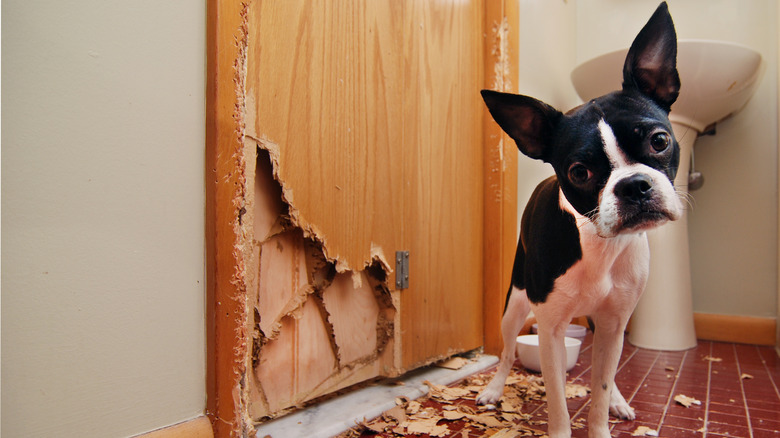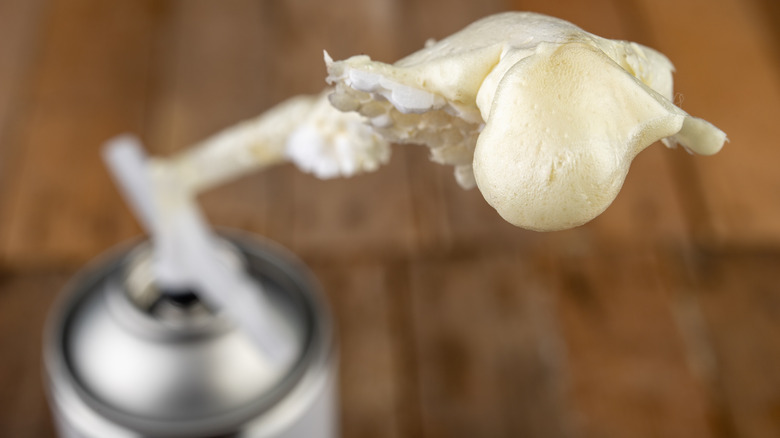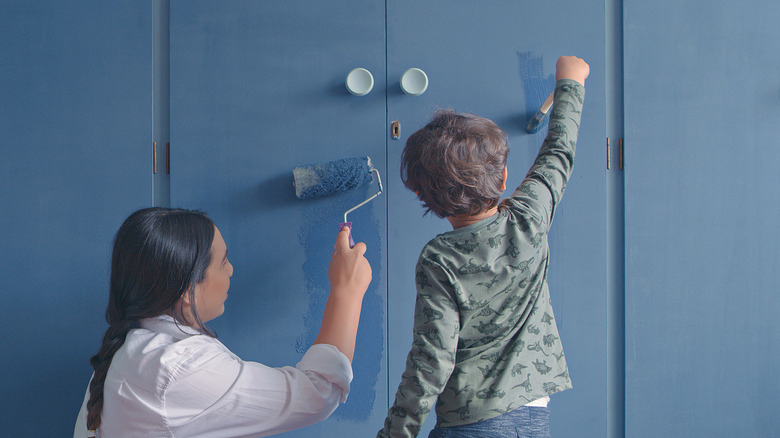What You Need To Fix A Hole In A Hollow Core Door
A hole in a door may seem like it requires the replacement of the entire structure, especially if it is a hollow core door that creates a gaping opening. It's not hard for this to happen, especially if you have two doors near each other or someone throws an object just right. You can patch a hollow core door in several ways, but the easiest method for doing so is to use spray foam insulation. It will allow you to fill in the hole and then patch over the top of the door, creating a hard-to-notice repair.
A hollow core door's design keeps it lightweight and easy to swing, but the lack of wood within it also makes it far easier to suffer from damage. (There are other drawbacks to hollow core doors too.) Often, this can create an unsightly look to the room, but fixing it with spray foam is an inexpensive solution. You'll also need some drywall compound, a utility knife, and paint to finish the project.
Other strategies exist for fixing these holes, like purchasing expensive wood fillers or even an auto body filler product to fill in the gaps. You could use insulation-like material too. Yet, all of that's far more expensive and may take some precision work that the spray foam method eliminates. Use this method on most interior hollow core doors, even closet doors.
Prep the door and buy spray foam
Your first step to making this repair happen is to remove all shards or damaged areas of door material from the hole. You want the edge of the hole to be as smooth as possible to allow for an even, level finish later. Take a moment to remove anything that's in the hole too. If the hole is larger, taking it off the hinge and laying it flat will help. Smaller holes may be okay to leave in position.
There are numerous spray foam products on the market, and most will work just fine. You'll find insulating spray foam in most home improvement stores near the drywall or paint section. Be sure to read the directions to know how to use the product. Also, take a look at the application process. If the hole is smaller, choose a spray foam product that has a small enough needle-like or straw-like attachment on it to get right into the desired area.
When the door doesn't have a huge hole but is more of a crack, use a power drill to place several small holes in the area surrounding the crack. That will allow you to fill in the surface behind the crack without having to remove the entire structure. This works, too, if you have a hole in one area and a crack that needs to be filled in another.
Completing the door repair project
Following the manufacturer's recommendations for how to use the spray foam, place a liberal amount of it into the hole. Ultimately, the foam will fill the hole and likely the surrounding area, even extending beyond the surface of the door. That's desired because you want a smooth surface. Then, allow this to completely dry for several hours or overnight.
The next day, use a utility knife to slice away any of the now-hardened material that's above the surface of the door. Don't be tempted to slice into the foam, though, as you don't want to weaken it. Once the surface is flat, mix up the drywall compound according to the package directions. You don't need to buy any type of expensive, tinted product here. Place as little as possible over the surface of the foam and the surrounding area of the door. You want this area to not protrude but rather blend in well with the rest of the door. Once it dries fully, you'll likely want to lightly sand it if it's not completely smooth.
You can then prime the door and paint it. It's best to paint the whole door so that it matches well. This may be the time to paint your interior door something fabulously unique. If you take the time to fix a hole in your door like this, no one will know it happened unless you tell them.


